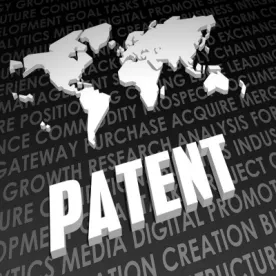In Thryv, Inc. v. Click-to-Call Technologies, LP, the Supreme Court held that 35 U.S.C. § 314(d) precludes judicial review of the PTAB’s decision to institute inter partes review (IPR) even on a petition filed beyond the 35 U.S.C. § 315(b) one-year time bar. Interpreting the statute to effectuate what it determined was Congress’s legislative purpose, to “weed out bad patent claims efficiently,” Justice Ginsburg’s majority opinion concluded that a PTAB institution decision resolving a § 315(b) challenge is “final and nonappealable” – and therefore insulated from judicial review.
The Court’s holding is an extension of its 2016 decision in Cuozzo Speed Technologies, LLC v. Lee, in which it held that the “final and nonappealable” language of § 314 (d) overcomes the presumption in favor of judicial review regarding the PTAB’s institution decisions under § 314(a). However, the Cuozzo Court did not specifically address § 315(b), which states that IPR proceedings “may not be instituted” if the petition requesting IPR is filed more than one year after the date on which the petitioner, its privy, or the real party in interest is served with a complaint alleging infringement of the patent at issue.
Thryv petitioned for IPR, and in response, Click-to-Call argued that Thryv’s petition was untimely under § 315(b). However, the PTAB concluded that because a 2001 infringement suit was voluntarily dismissed without prejudice, the one-year time bar was not triggered, and it instituted IPR, ultimately invalidating several of Click-to-Call’s patent claims. On appeal, the Federal Circuit vacated the PTAB’s final written decision in light of its en banc decision in Wi-Fi One, which held that “time-bar determinations under § 315(b) are appealable” because the timeliness determination “is not ‘closely related’ to the institution decision addressed in § 314(a).” Wi-Fi One, LLC v. Broadcom Corp., 878 F. 3d 1364, 1366, 1374 (Fed. Cir. 2018). Thryv then appealed the issue to the Supreme Court.
The Supreme Court disagreed with the Federal Circuit and held that the PTAB’s “application of the § 315(b) time bar is closely related to its decision whether to institute IPR and is therefore rendered nonappealable by § 314(d).” The Court reasoned that the § 315(b) determination is integral to the institution decision under § 314(a) due to the nature of a timeliness challenge. That is, “a contention that a petition fails under § 315(b) is a contention that the agency should have refused to institute an IPR” and such a contention defeats the presumption favoring judicial review.
The Court further reasoned that permitting appeals addressing § 315(b) would frustrate Congress’s purpose of efficiently resolving claim invalidity by creating a mechanism to save bad patent claims. In particular, the Court pointed out that Click-to-Call only challenged the Board’s decision to institute IPR in the first place, not the Board’s invalidity finding. Further still, according to the Court, Congress prioritized patentability over timeliness, as evidenced by the availability of further challenges (e.g., upon request from another petitioner who is willing and able to satisfy the § 315(b) time bar).
The Court rejected Click-to-Call’s narrower interpretation of § 314(d) as only applying to the “reasonable likelihood” determination under § 314(a). In doing so, the Court turned again to Cuozzo, holding that the review bar of § 314(d) is not confined to § 314(a) and clearly “encompasses the entire determination whether to institute an IPR…under this section.”
Justice Gorsuch offered a vigorous dissent, joined in part by Justice Sotomayor, regarding the Court’s statutory interpretation, emphasizing that § 314(d) only insulates from judicial review “’[t]he determination’ made ‘by the Director’ ‘under this section’—that is, a determination discussed within § 314.” Under Justice Gorsuch’s reading, nothing would insulate the PTAB’s determinations outside of 35 U.S.C. § 314 from judicial review, including determinations under the § 315(b) time bar. Particularly concerning to the dissent was the idea that the Director’s “reasonable likelihood” determination under § 314 relates to the merits and is thus effectively subject to review by the Board and the courts as the IPR progresses, while determinations under § 315(b) would be completely immune from review, “no matter how wrong or even purposefully evasive.”
Most concerning to Justice Gorsuch was that the majority opinion compounded what he characterized as “a departure from the constitutional plan, one in which the Executive Branch assumed responsibilities long reserved to the Judiciary,” by requiring patent owners to plead their cases before employees of the Executive branch, “but limiting their ability to obtain judicial review when those same employees fail or refuse to comply with the law.”
Thryv clearly indicates that appealing the PTAB’s decision to institute IPR under § 314(d) will not be allowed, even when that decision resolves a challenge based on the § 315(b) time bar. At this time, the Court seems content to conclude that judicial supervision over the PTAB’s institution decisions is unnecessary (absent what Cuozzo called “shenanigans”) and that Congress has entrusted the agency with broad authority to institute IPR proceedings. Left unresolved for now, is how many other statutory provisions outside of § 314 will be deemed to “closely relate” to the Board’s decision to institute an IPR and therefore be rendered non-appealable.





 />i
/>i

